Thanks to a fierce case of jet lag, I have been able to indulge in my (secret) obsession with the pageantry and pomp of the British Royals. My late night recap of this week’s Diamond Jubilee, complete with golden carriages, glimmering jewels, and adoring throngs has left me feeling a little plain here in the US of A. Oh sure, our fixation on movie stars are supposed to be the American version of royalty, but it’s just not the same. Brad Pitt would never wear a crown-it would mess up his perfectly coifed ‘do. Angelina would never wave pouty –lipped from a carriage- there is no way to show off her “slit up to here” attire. Sadly, we are sorely lacking in true pomp and ceremony.
During a recent visit to Oahu, I was surprised to learn that we do have a royal family residence here in the United States to whet our appetite for ceremony. Stepping through the gilded and crested gates, I was able to indulge in the glory and grandeur of the Hawaiian monarchy, but I also learned that a story of pain was hidden inside the stately walls of the Iolani Palace.
Iolani Palace is the only true royal palace in the United States and the last official residence of the monarchy that ruled Hawaii at the end of the nineteenth century. Completed in 1882, the palace was built to establish the prestige of the Hawaiian monarchy overseas and was influenced by the world travels of King Kalakaua.
As the first Hawaiian monarch to visit the United States and circumnavigate the globe, King Kalakaua was anxious to present himself and his country as progressive, so he spared no expense in outfitting the palace with an array of modern amenities. Indoor plumbing, electric lighting, and the newly invented telephone were all a part of the stately residence, where lavish parties and the reception of worldly dignitaries were a regular occurrence.
Today, the Iolani Palace has the kind of air that allows you to glimpse the scenes and hear the stories of the past. Walking up the front steps and taking a pause in the colonnaded verandah, you can almost envision a parade of carriages proceeding up the front drive and finely dressed luminaries emerging from their lavish perches.
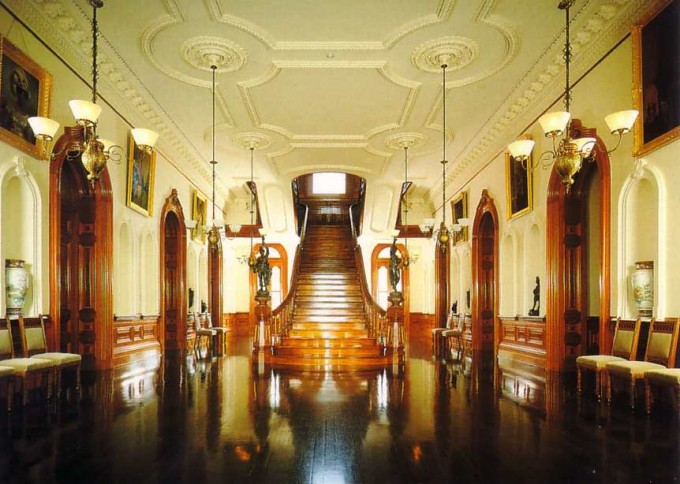 ~Photo Courtesy of Iolani Palace~
~Photo Courtesy of Iolani Palace~
Inside, the burnished hardwood koa floors, freshly oiled to a mirrored shine echo with the footsteps of royalty and you can imagine the finely dressed monarchs descending from the sweeping, Titanic-esque staircase. Above, electric lighting offers a sunset glow to the room, offering visitors one of the first glimpses of electric lighting. Even the White House and Buckingham Palace were both still outfitted with gas lamps at the time. (Take that England.)
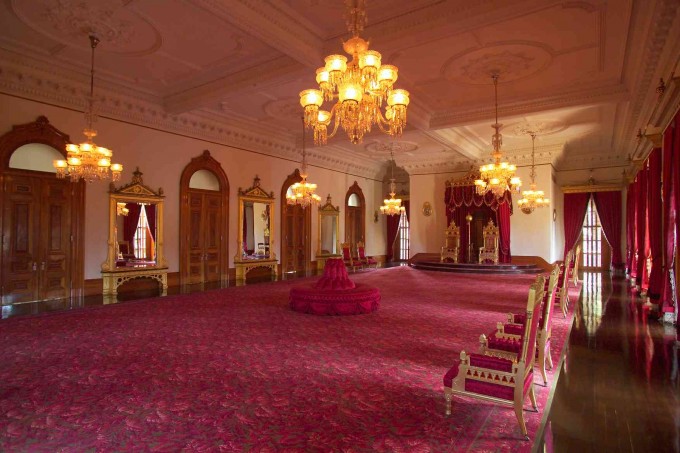 ~Photo Courtesy of Iolani Palace~
~Photo Courtesy of Iolani Palace~
Continuing past giant portraits and porcelain vases takes you into the opulent throne room, where the walls echo with announcement of visitors to the King and Queen balanced on red velvet thrones. A rustle of starched crinoline and stiff fabric can be heard and the proper bows and curtsies are offered with the swells of chamber music in the background. Preparations for dinner with the clinking of fine china and silverware can be heard across the hall.
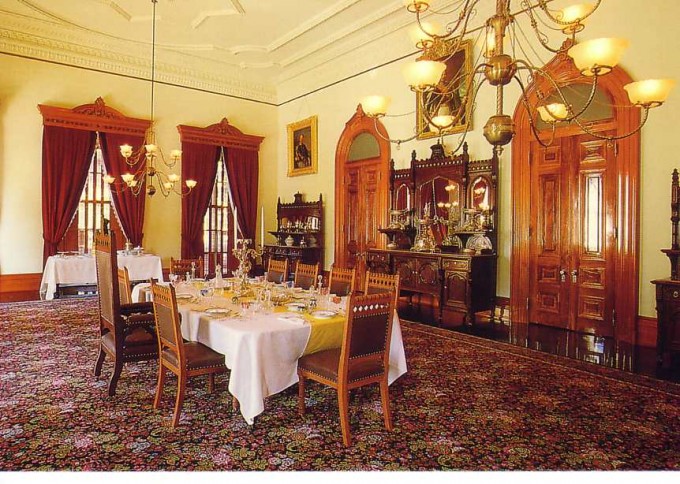 ~Photo Courtesy of Iolani Palace~
~Photo Courtesy of Iolani Palace~
Although frozen in time and eerily empty, each room of the palace still has a vibrant story to tell, if you are willing to listen. It is the stories told on the second floor that offers the most painful, yet poignant glimpse into Hawaii’s history before it became the 50th state. It was in a sparsely furnished room on the second floor that Queen Liliuokalani was imprisoned after she was forced to abdicate her throne by occupying American forces. Heroically, she laid down her crown so that there would be no bloodshed for her people, but that came with a price that included a humiliating trial in her own throne room and an eight month house arrest in the palace. Since the victor often writes the history, it’s hard to say exactly what happened during this period of Hawaiian and American history, but it certainly seems like there was an abuse of power by the American occupiers. Whatever the details, the imprisonment marked the end of the Hawaiian monarchy, gradual decline of the Hawaiian culture, and closure of the palace as a royal residence.
The narrative of the Iolani Palace is not over, and today, not only the rooms and walls have stories, but now the furniture has historical yarns to spin. After the Queen’s imprisonment, the contents of the palace were sold at auction and dispersed around the world. Gradually, the items that were witness to royalty and ceremony have been recovered- glassware from Australia, a table in the Governor’s mansion in Iowa, a chair found in a local thrift store. If only these furnishings could chronicle their experiences, they could tell the stories of a majestic past, a rocky period of loss and uncertainty, and a future of coming home to rediscover and celebrate a rich culture.
~The Iolani Palace provided me with tickets to visit. They did not require that I express any particular viewpoint and all opinions are my own.~
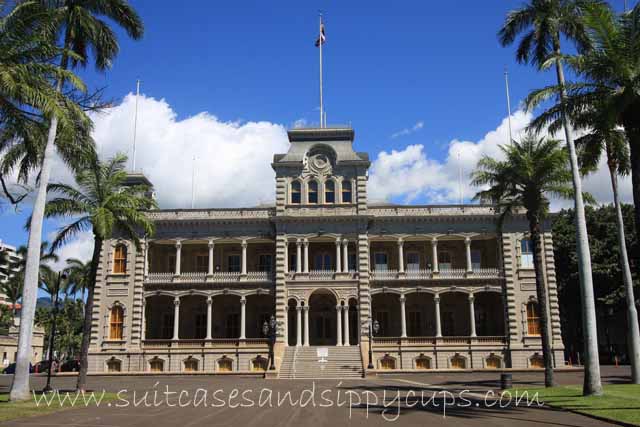
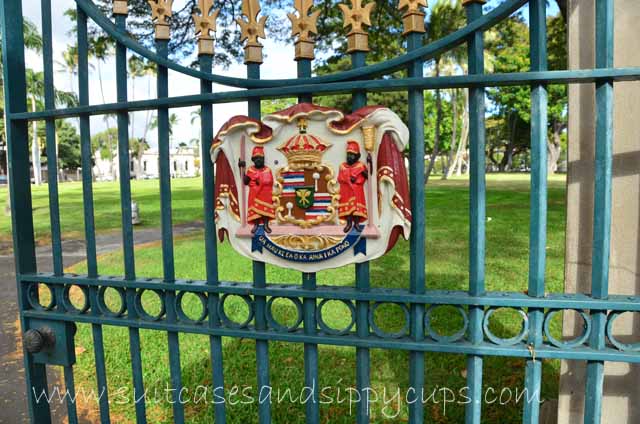
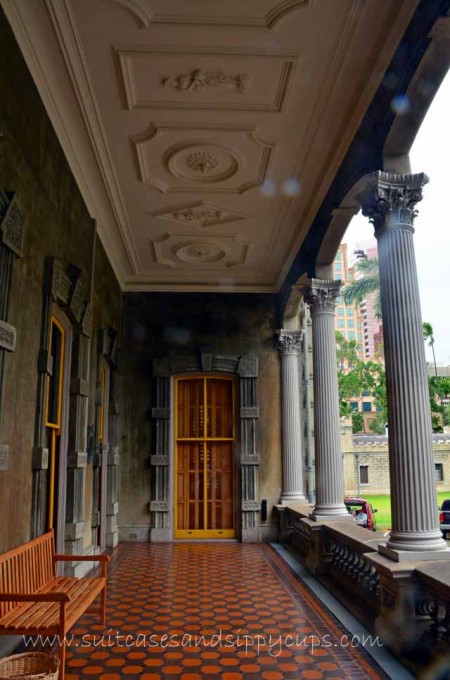
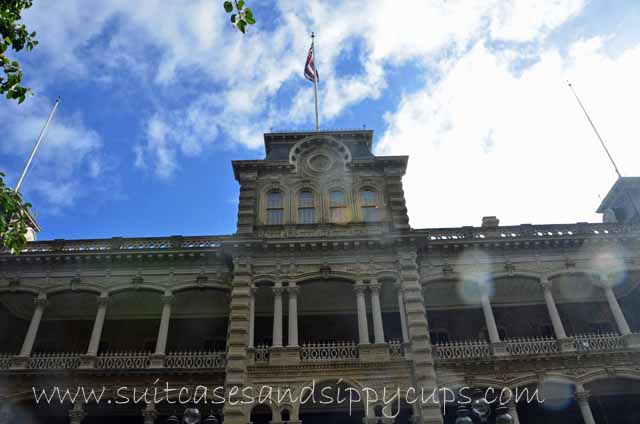
This looks like a beautiful place I would love to visit . I’m glad you enjoyed the jubilee it did make me proud to be British. If you check out my blog I have a post all about the event. It was fab I even had tickets to go but was sick 🙁
We didn't make it here when we were in Oahu and now that I've seen your photos I'm regretting it even more – Emma would have loved it!! We did learn a little bit about the fascinating history of Hawaii's royalty at the Bishop Museum – Emma was thrilled that there had been a Queen Emma! 🙂